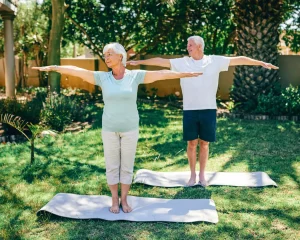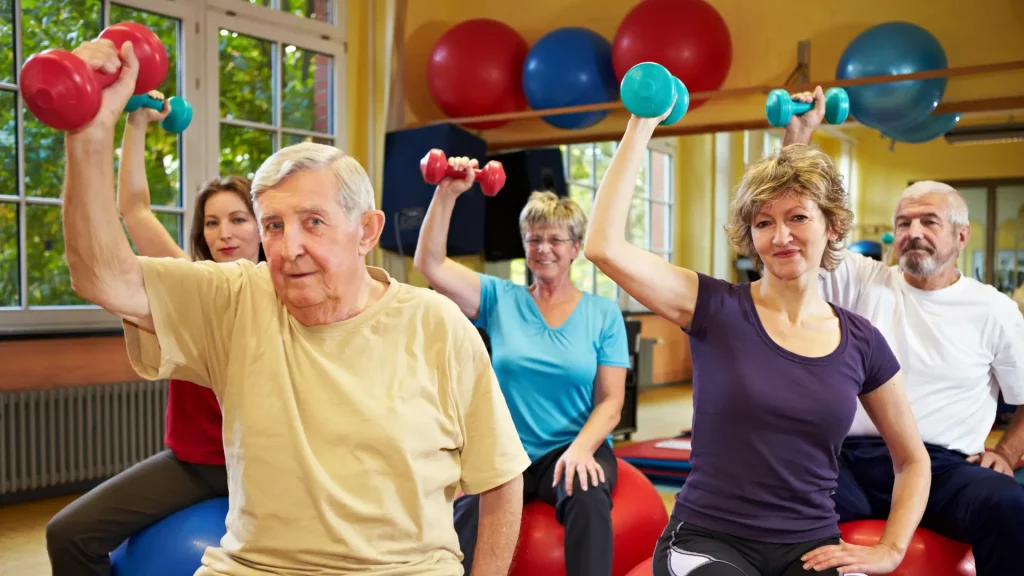Our bones are continuously changing — new bone is made and old bone is broken down. When we are young, our body makes new bone faster than it breaks down old bone, and our bone mass increases. Most people reach their peak bone mass around age 30 and beyond that, they lose slightly more bone mass than they gain. So, it’s never too early to start prioritising your bone health. The earlier you start resistance training the better and never stop – this is not something to leave until you’re older!
Osteoporosis is a bone condition that affects over 1.39 million Australians and if left untreated, it can lead to loss of mobility. It’s often referred to as the silent disease because there are usually no symptoms until a person breaks or fractures a bone.
How to reduce your risk of osteoporosis
Osteoporosis often affects mostly women over the age of 50, but men are at risk too. If you’ve broken a bone in a minor bump or fall, you could have osteoporosis. Many factors can increase your risk of osteoporosis; including, family history, low calcium or vitamin D levels, some chronic conditions, gender, age, and lifestyle.
Take this short quiz to find out if you’re at risk of osteoporosis.
It’s true that many risk factors for osteoporosis, such as your sex, age, and family history, are things you can not change. However, there are actionable steps to reduce or prevent your risk of osteoporosis.
Here are 5 steps you can take:
- Adopt a calcium-rich diet and ensure sufficient vitamin D intake: Incorporating foods like dairy products, cooked leafy greens, and fortified foods into your meals can provide the calcium your bones need. Vitamin D-rich foods like fatty fish and fortified cereals can help maintain bone health.
- Engage in regular exercise, especially weight-bearing activities like jumping, running, and lifting weights. These activities stimulate bone cells to produce proteins that strengthen bones.
- Avoiding smoking and excessive alcohol consumption is paramount for bone health: Both habits have been linked to decreased bone density and increased fracture risk. By quitting smoking and moderating alcohol intake, you can protect your bones and overall health.

- Having regular bone density testing (DEXA scan). This is especially important for individuals at higher risk, such as postmenopausal women and older adults. This allows for early detection and intervention; schedule regular check-ups with an experienced physiotherapist to monitor your bone health and discuss any concerns or risk factors you may have.
- Falls pose a significant threat to individuals with osteoporosis due to the increased risk of fractures. Taking measures to prevent falls, such as removing tripping hazards at home, installing handrails, and wearing appropriate footwear, can help minimise this risk. Be proactive about creating a safe environment to reduce the likelihood of falls and protect your bone health. Also, regular and consistent strength and balance training are a good way to be proactive about reducing your falls risk.
Conclusion
In conclusion, prioritising your bone health is a proactive step towards maintaining vitality and independence. If you have risk factors for osteoporosis, don’t hesitate to discuss them with your doctor. Certain medications may impact your bone health, and being informed is key to effective management.
By incorporating a balanced diet, regular exercise, and healthy lifestyle habits, you can provide your bones with the support they need to remain strong and resilient for years to come. Your future self will thank you for the investment in your bone health today.

